Thermaltake Toughpower DPS G RGB 1250W PSU Review
Thermaltake recently released a new flagship Titanium-class PSU, the Toughpower DPS G RGB with 1250W max. power. Besides an RGB LED fan, this unit also features high performance, modular cabling, and compatibility with the SPM cloud platform.
Why you can trust Tom's Hardware
Transient Response Tests
Advanced Transient Response Tests
For details on our transient response testing, please click here.
Ιn these tests, we monitor the response of the PSU in two different scenarios. First, a transient load (10A at +12V, 5A at 5V, 5A at 3.3V and 0.5A at 5VSB) is applied for 200ms while the PSU works at 20 percent load. In the second scenario, the PSU is hit by the same transient load while operating at 50 percent load. In both tests, we use our oscilloscope to measure the voltage drops caused by the transient load. The voltages should remain within the ATX specification's regulation limits.
These tests are crucial because they simulate the transient loads a PSU is likely to handle (such as booting a RAID array or an instant 100 percent load of CPU/GPUs). We call these tests "Advanced Transient Response Tests," and they are designed to be very tough to master, especially for a PSU with a capacity of less than 500W.
Advanced Transient Response at 20 Percent
| Voltage | Before | After | Change | Pass/Fail |
|---|---|---|---|---|
| 12V | 12.004V | 11.932V | 0.60% | Pass |
| 5V | 5.066V | 5.007V | 1.16% | Pass |
| 3.3V | 3.302V | 3.202V | 3.03% | Pass |
| 5VSB | 5.047V | 5.012V | 0.69% | Pass |
Advanced Transient Response at 50 Percent
| Voltage | Before | After | Change | Pass/Fail |
|---|---|---|---|---|
| 12V | 11.962V | 11.917V | 0.38% | Pass |
| 5V | 5.059V | 4.998V | 1.21% | Pass |
| 3.3V | 3.300V | 3.199V | 3.06% | Pass |
| 5VSB | 5.033V | 4.998V | 0.70% | Pass |
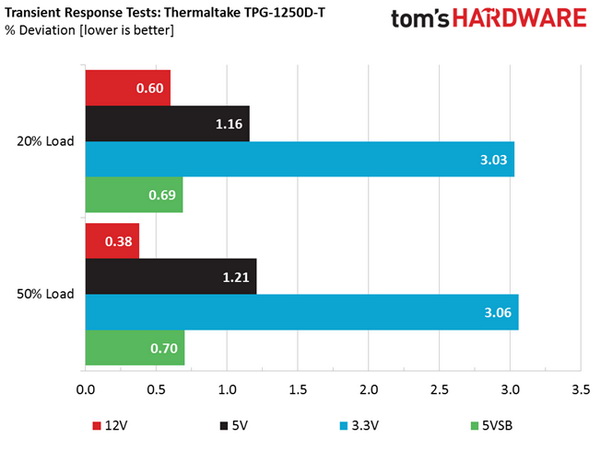
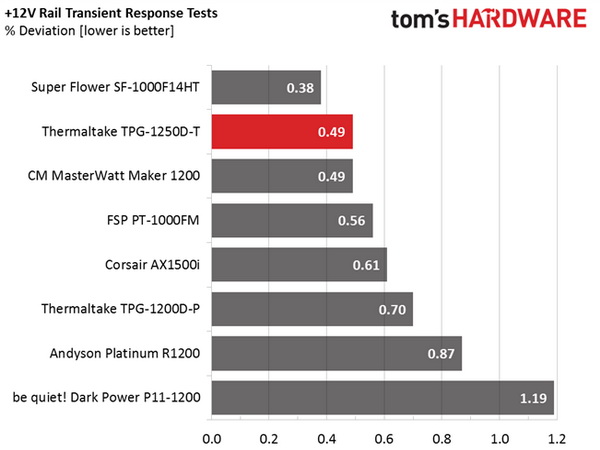
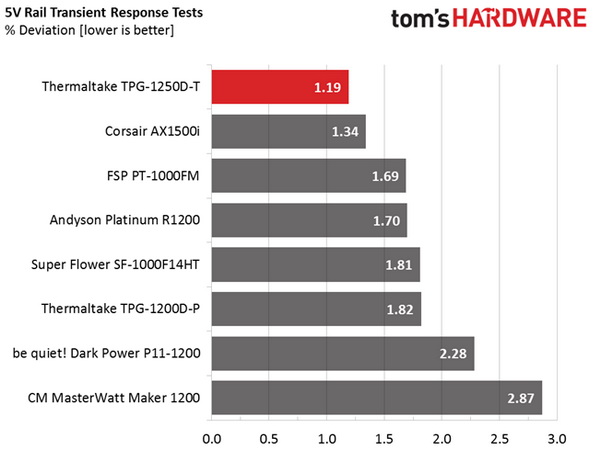
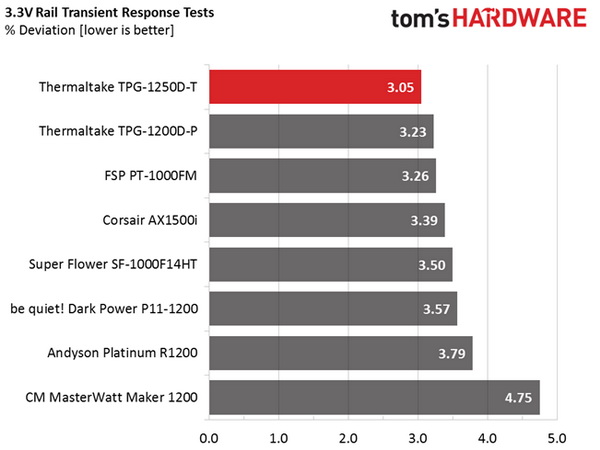

The +12V rail's transient response is very good, as it should be in such a high-end platform. The 5V and 5VSB rails also perform well, while the 3.3V rail offers decent performance. It would be nice if 3.3V would stay within 3%. Ideally, we'd like to see it close to 2%.
Here are the oscilloscope screenshots we took during Advanced Transient Response Testing:
Transient Response At 20 Percent Load
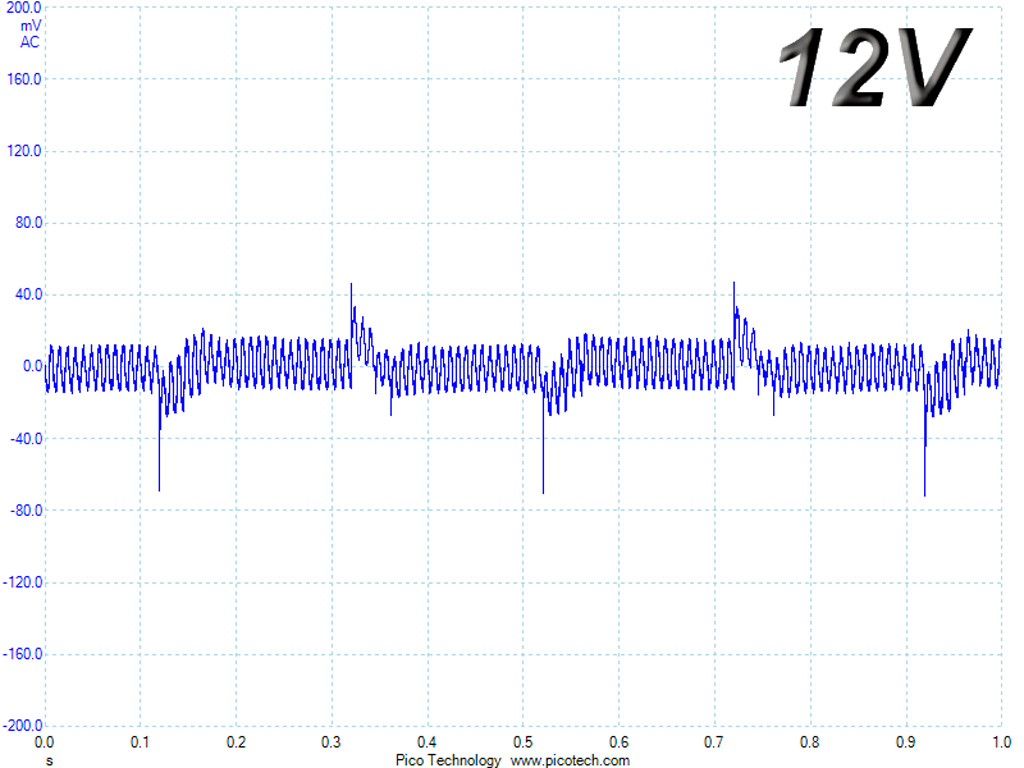
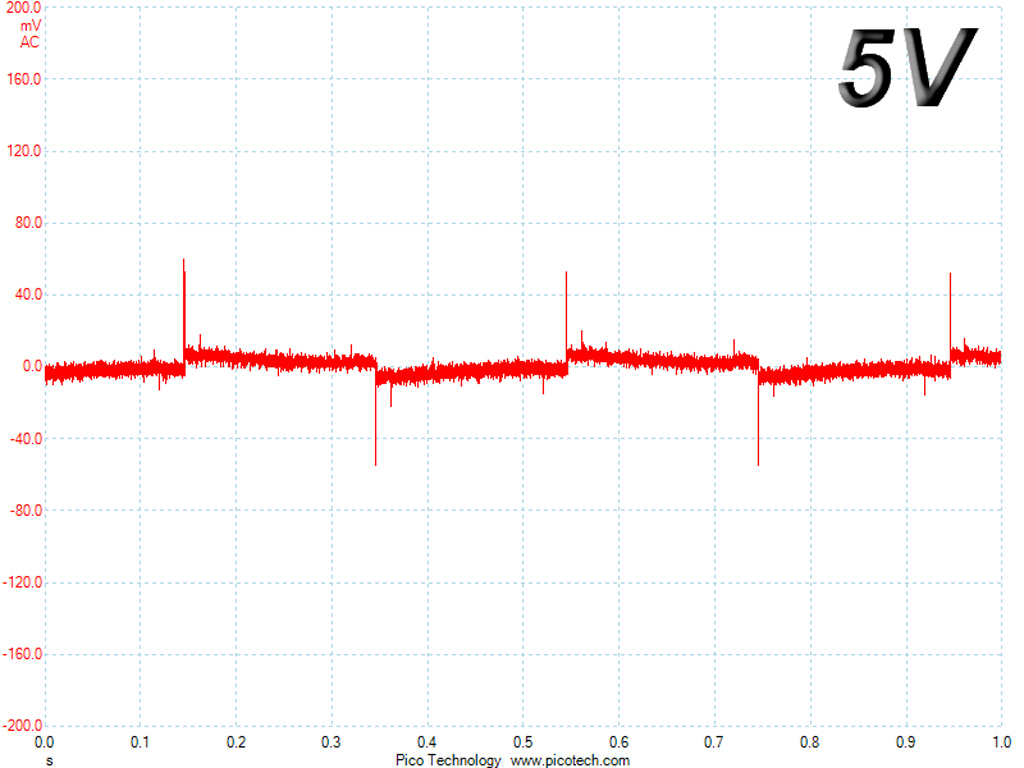
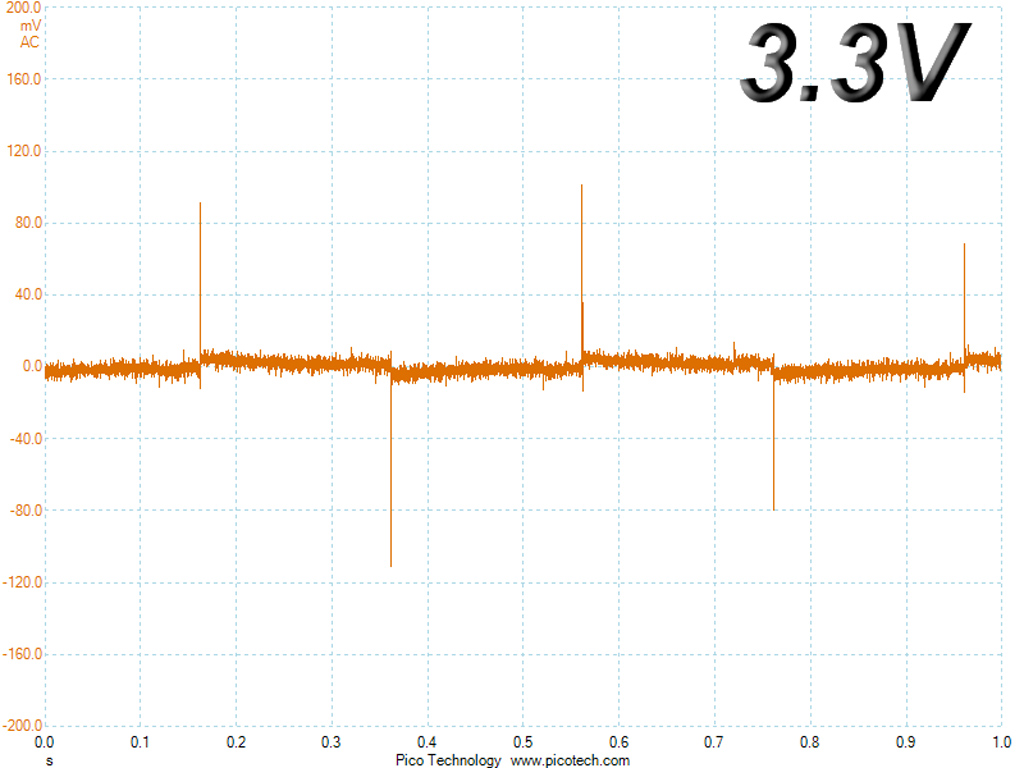
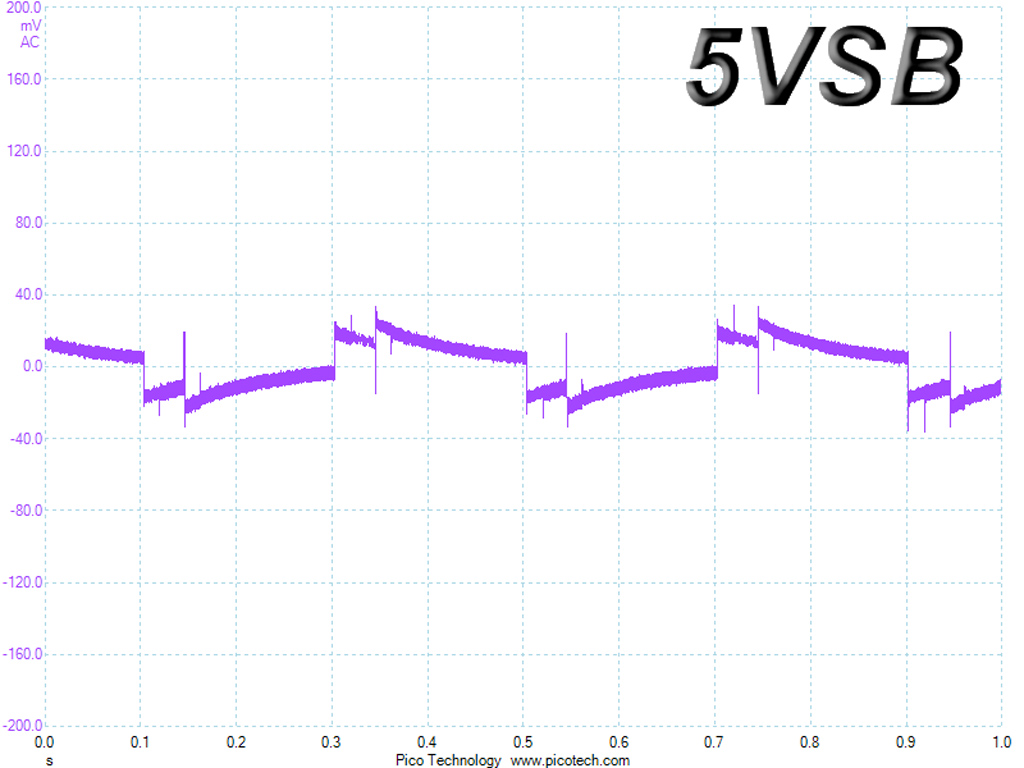
Transient Response At 50 Percent Load
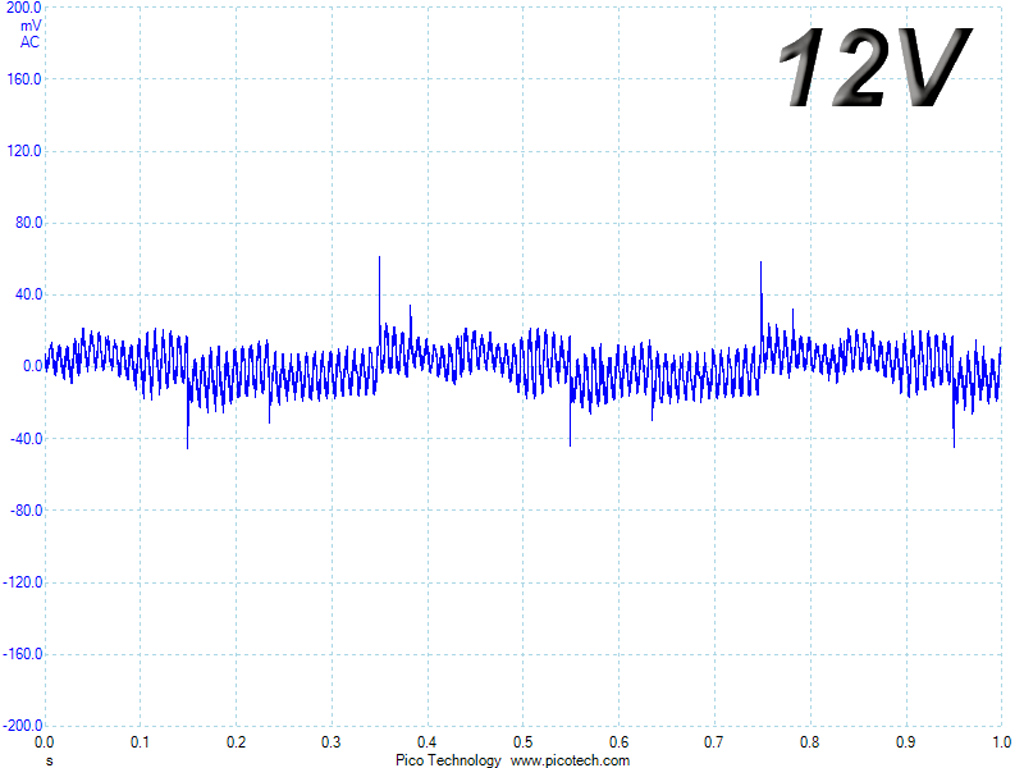

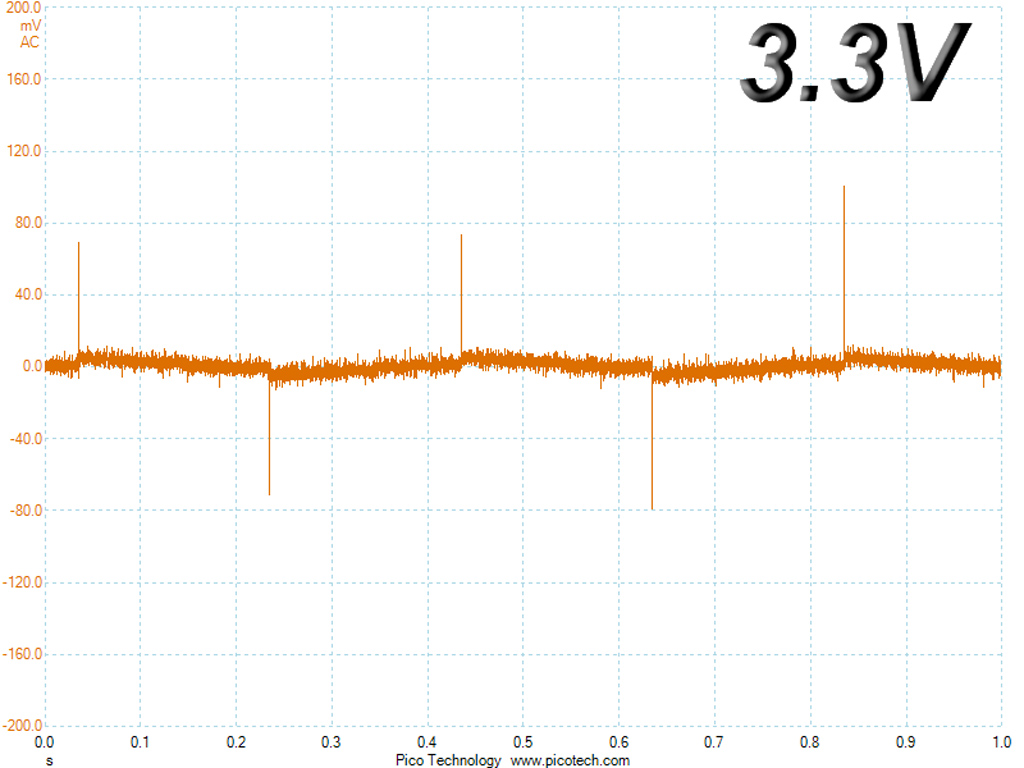
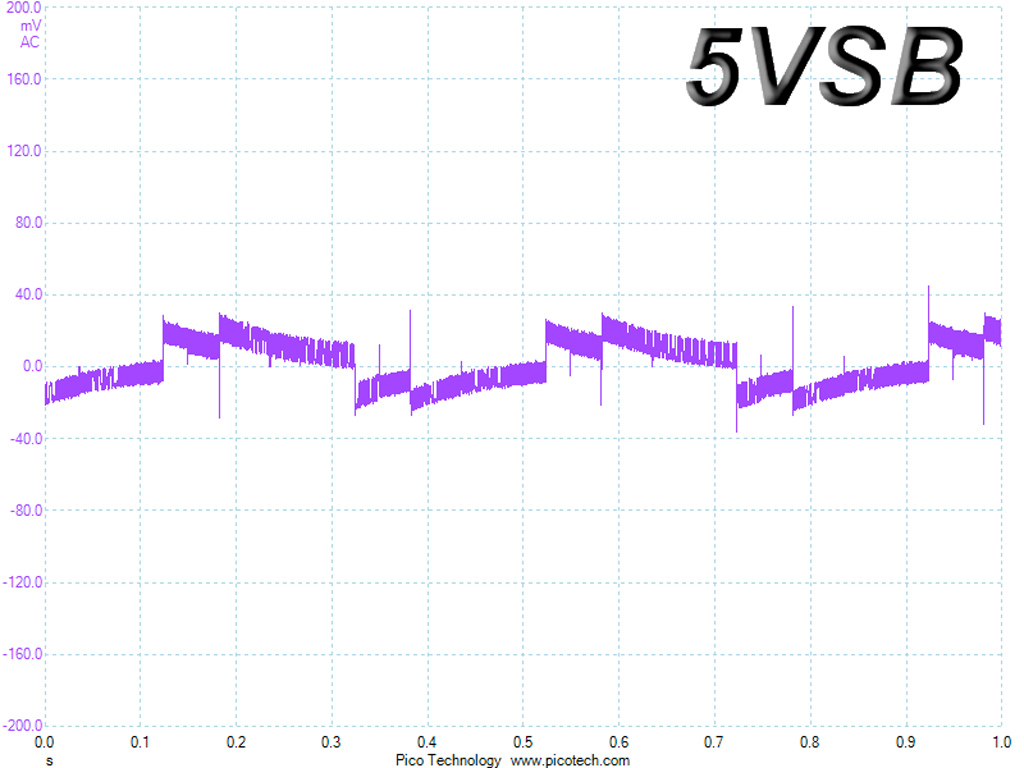
Turn-On Transient Tests
In the next set of tests, we measured the response of the PSU in simpler transient load scenarios—during its power-on phase.
For the first measurement, we turned off the TPG-1250D-T, dialed in the maximum current the 5VSB could output and switched the PSU on. In the second test, we dialed the maximum load the +12V could handle and started the PSU while it was in standby mode. In the last test, while the PSU was completely switched off (we cut off the power or switched it off by flipping the on/off switch), we dialed the maximum load the +12V rail could handle before switching the PSU on from the loader and restoring power. The ATX specification states that recorded spikes on all rails should not exceed 10 percent of their nominal values (+10 percent for 12V is 13.2V, and 5.5V for 5V).
Get Tom's Hardware's best news and in-depth reviews, straight to your inbox.
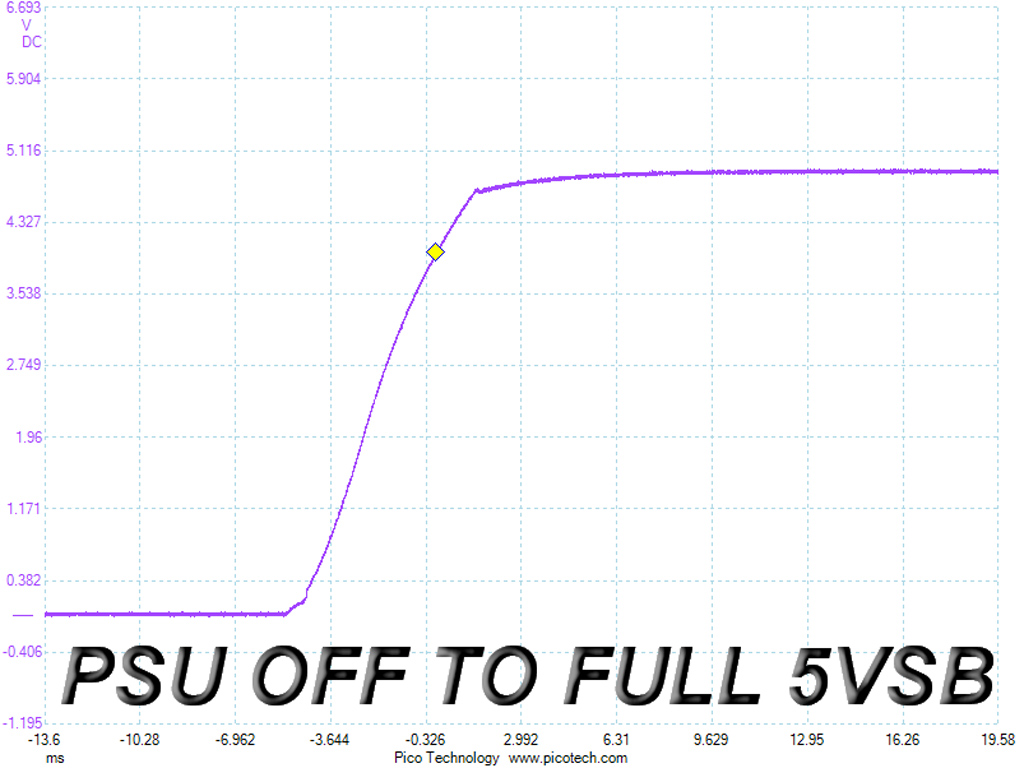
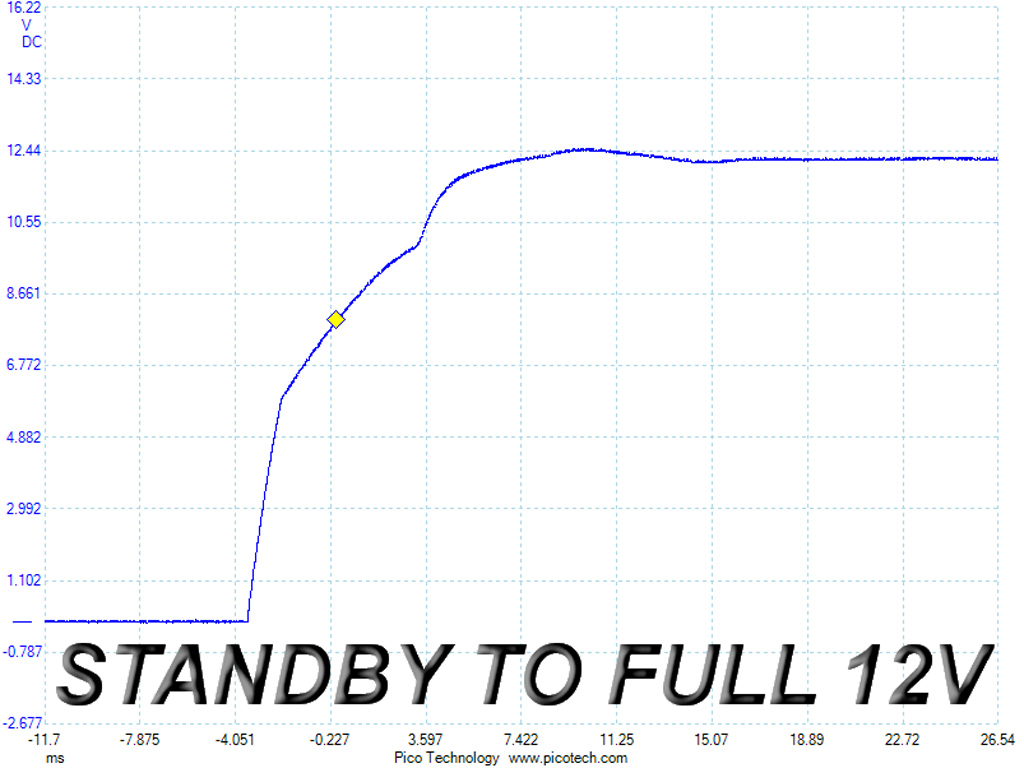
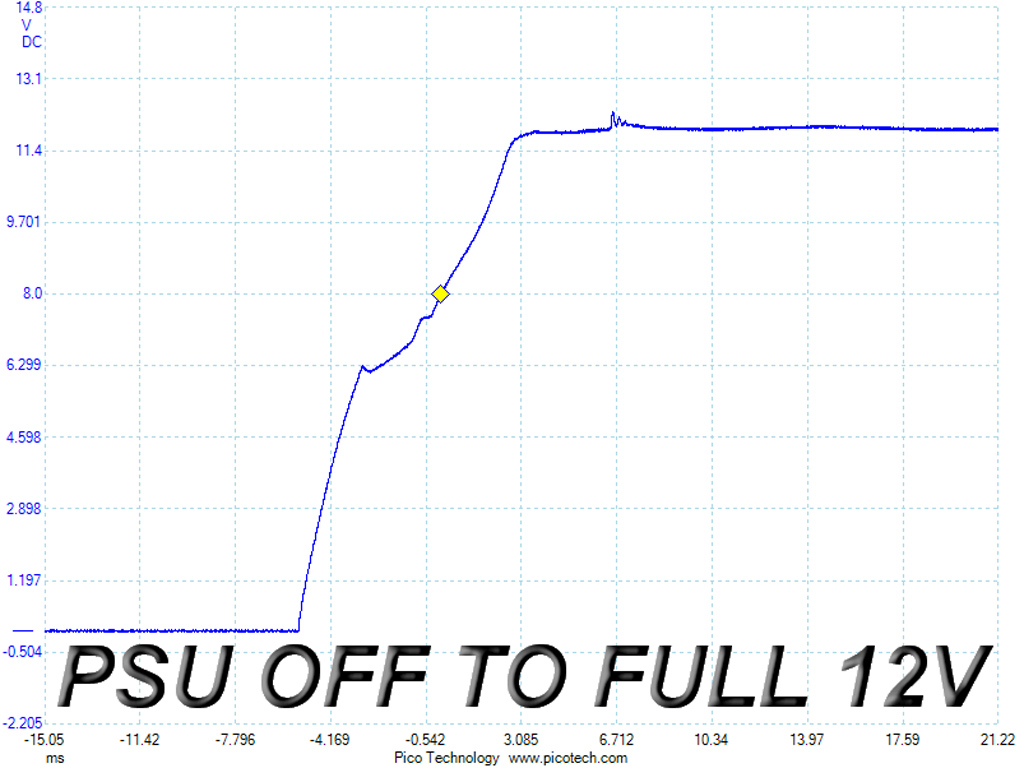
The 5VSB slope is perfect, while the +12V slope in the second test doesn't include any spikes (although it isn't quite smooth). Finally, in the third test, we do notice a spike, though it's pretty small and occurs after the rails settle down to their nominal voltage.
Current page: Transient Response Tests
Prev Page Cross-Load Tests And Infrared Images Next Page Ripple Measurements
Aris Mpitziopoulos is a contributing editor at Tom's Hardware, covering PSUs.
-
GPUEnthusiast I think those cables look straight ugly with three colors like that. In a windowed case, you won't even notice they're sleeved and it will instead look like an old style power supply with the rainbow wires, just really thick. I think they should stick with black and red, or just black. That yellow is faded too much and looks like it's for a banana themed build.Reply -
g-unit1111 Maybe it's me but I fail to grasp how an RGB ring on a PSU adds to it. Especially since most cases have bottom-mounted PSUs these days.Reply -
jimmysmitty Reply18420891 said:Maybe it's me but I fail to grasp how an RGB ring on a PSU adds to it. Especially since most cases have bottom-mounted PSUs these days.
It's all about them ground effects brah!!!!!
I agree though. Unless you have a very open bottom, most do not since most have a dust filter, it wont really show. I would expect a LED logo instead. -
turkey3_scratch This is a really great power supply! The transient response performance is top-notch. I really like it. The only thing I wish is for it to be a multirail design.Reply -
basroil Almost something I could recommend, if not for that horrible double line frequency oscillation in the 12V. I would have expected a digitally controlled system to be able to remove simple harmonics like that. Perhaps their controller algorithm isn't all that great?Reply -
powernod I was anxiously expecting this review due to CWT's new CST platform.Reply
Just like Aris said at the end of his review, i'm expecting to see how the smaller wattage models will perform.
The 1250 watt model seems like an excellent unit, and the only thing i disliked is the small output from the smaller rails ( 20A @5V &3.3V / 15A @5VSB ).
P.S. Once again, an excellent review from Aris!!